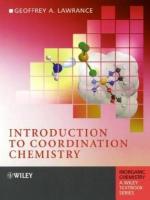|
This section contains 887 words (approx. 3 pages at 300 words per page) |

|
Coordination compounds are formed by the union of a metal ion (usually a transition metal) with a nonmetallic ion or molecule. For example, when white, anhydrous copper sulfate, CuSO4, is exposed to ammonia gas, a deep blue crystalline product is formed. This product consists of four moles of ammonia per mole of copper sulfate; the positive copper ion Cu2+ bonds to four ammonia molecules. The nitrogen atom of each NH3 molecule contributes a pair of shared electrons to form a covalent bond with the Cu2+ ion. This type of bond, where both electrons are contributed by the same atom, is referred to as a coordinate covalent bond.
The reaction of the Cu2+ ion with four ammonia molecules r esembles the bond between a proton and an ammonia molecule to form the ammonium ion. In both cases, the ammonia molecule is acting as a Lewis base, donating...
|
This section contains 887 words (approx. 3 pages at 300 words per page) |

|


